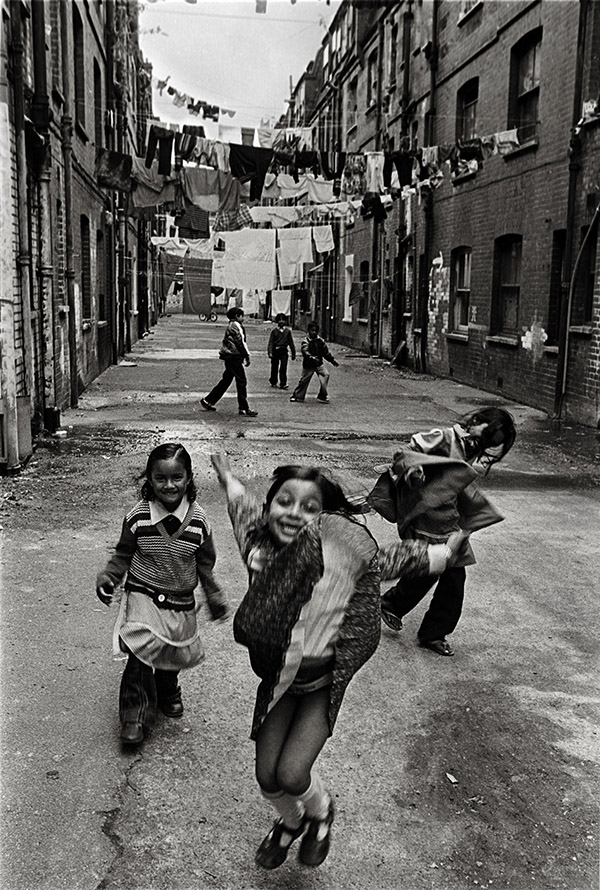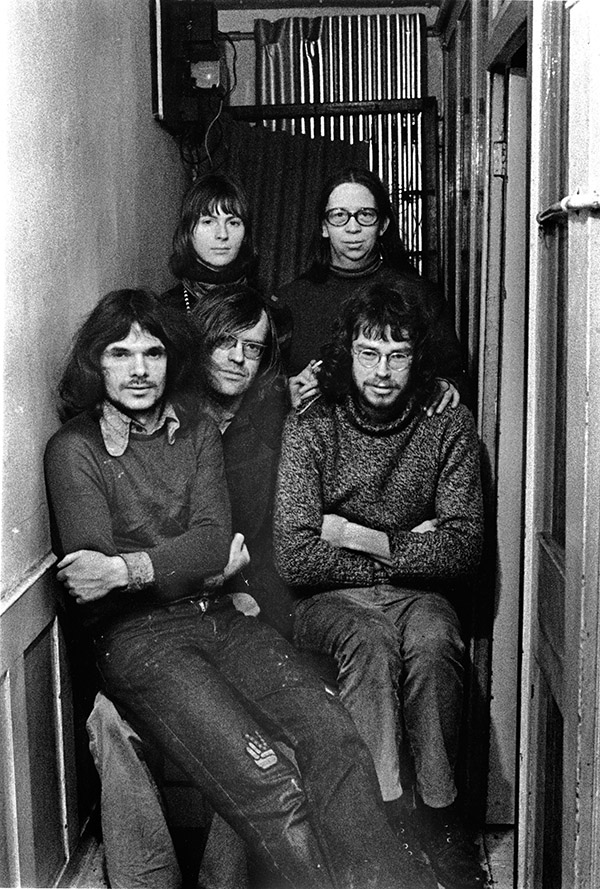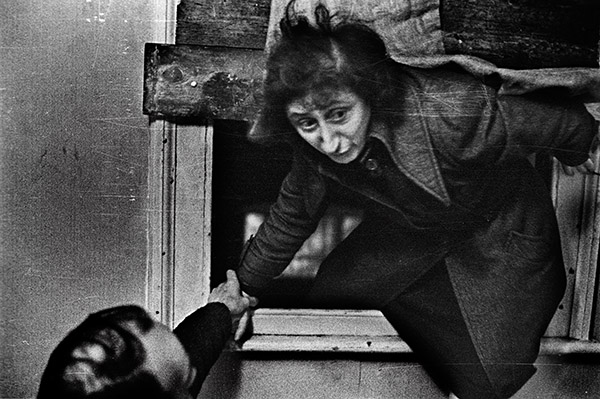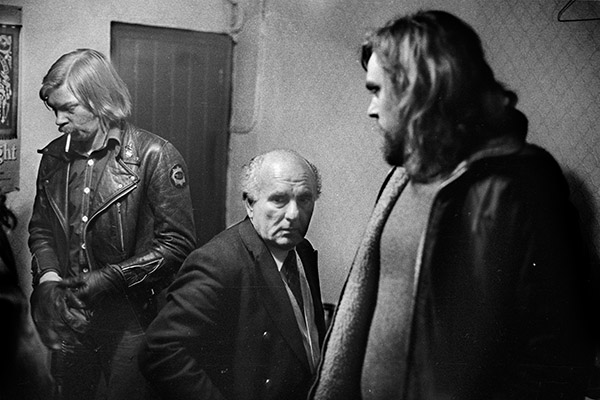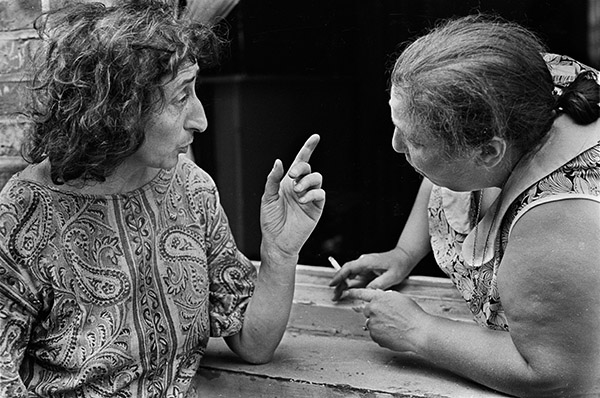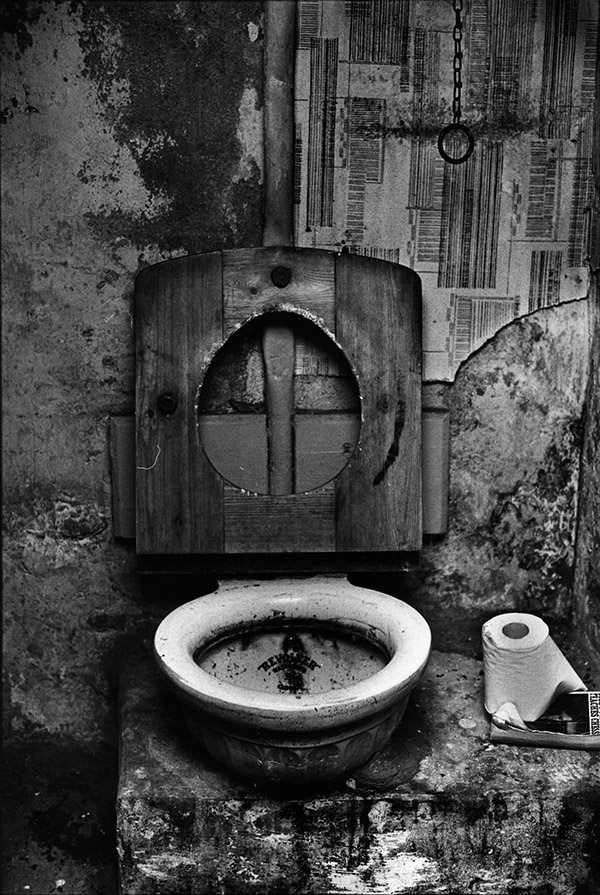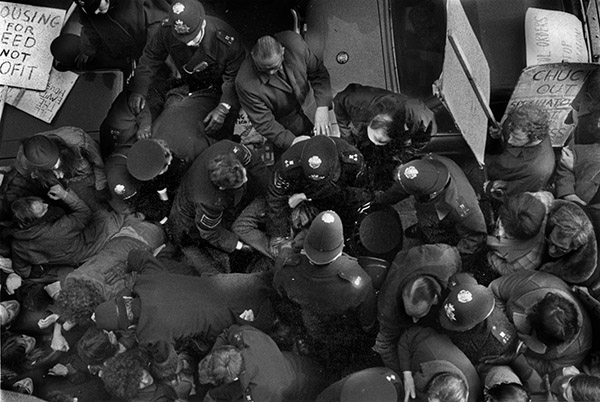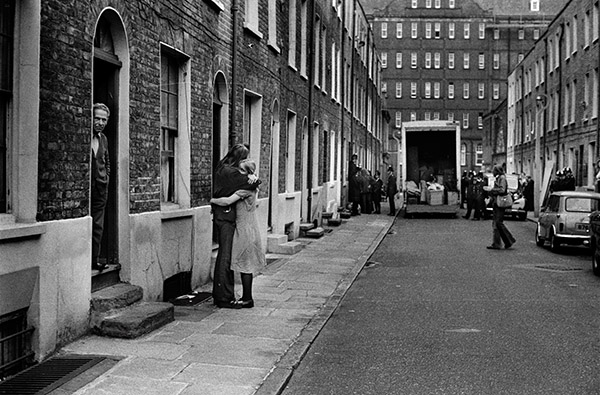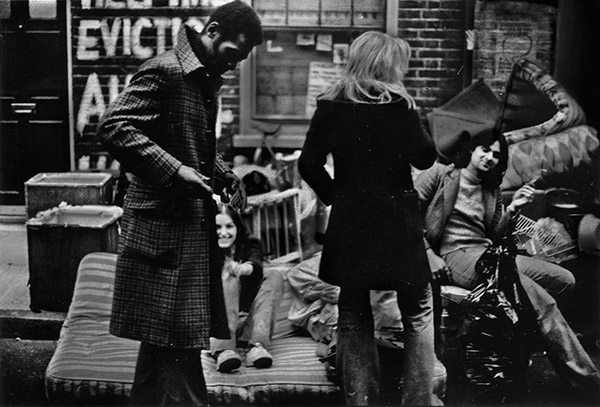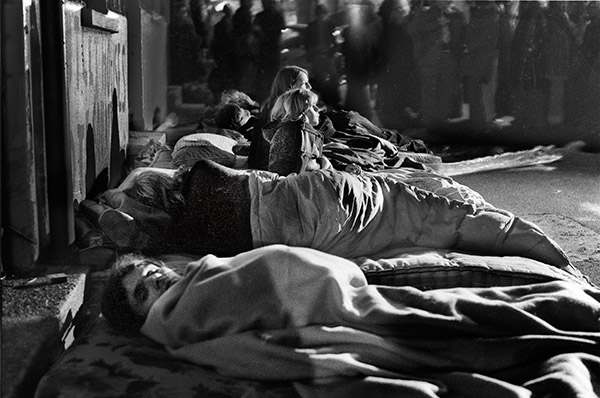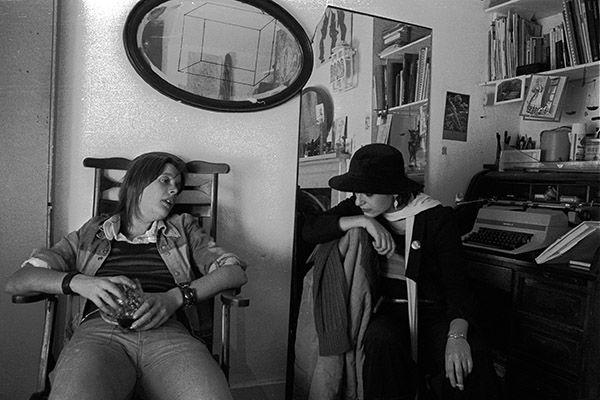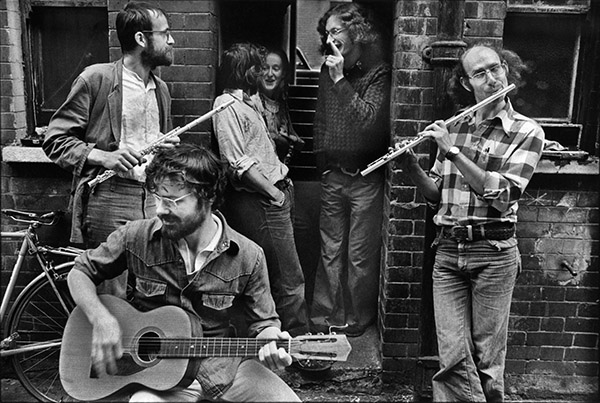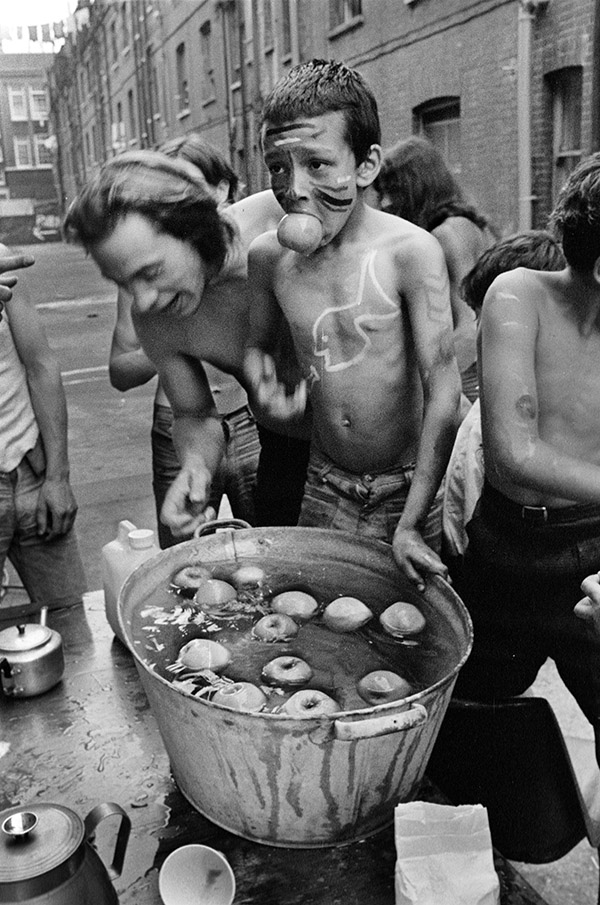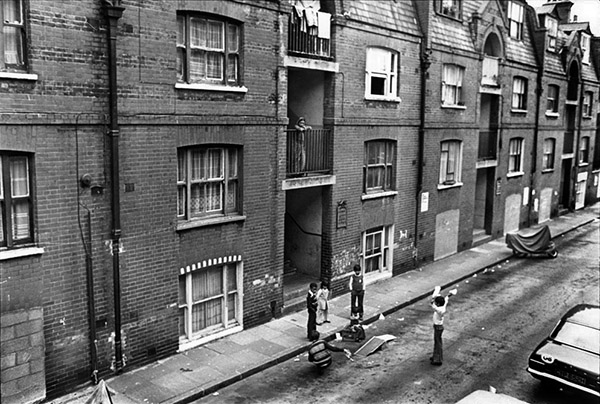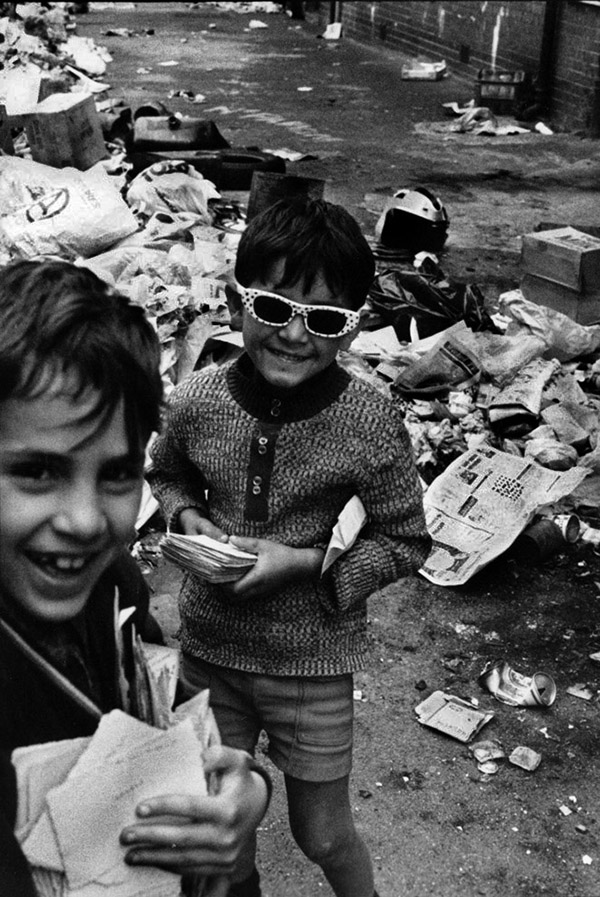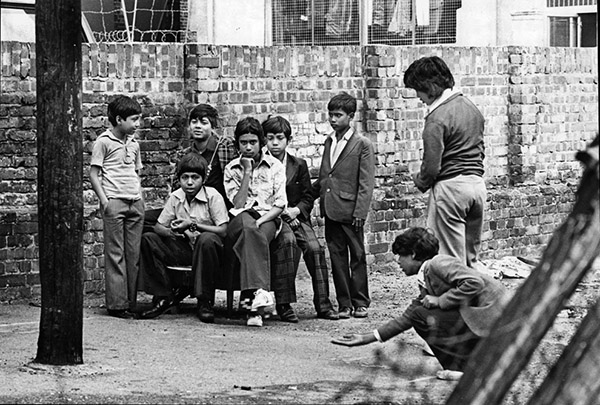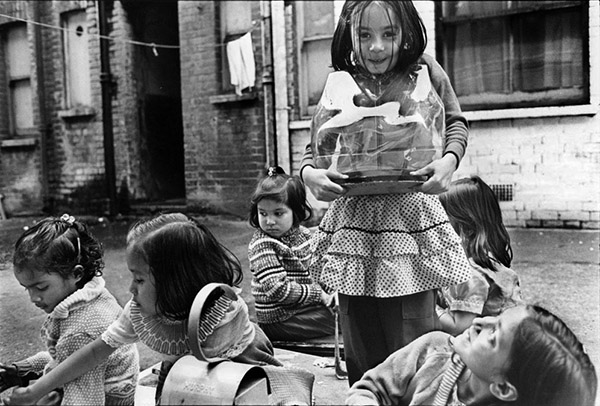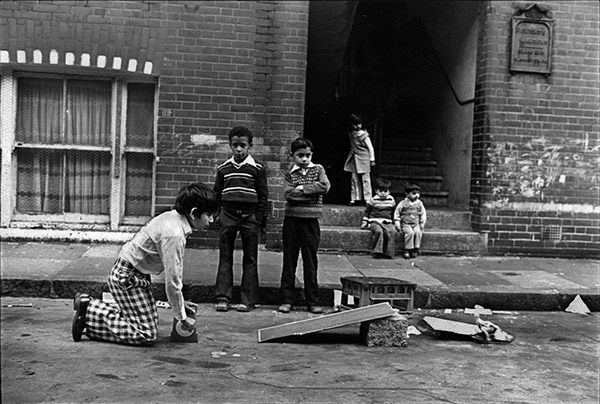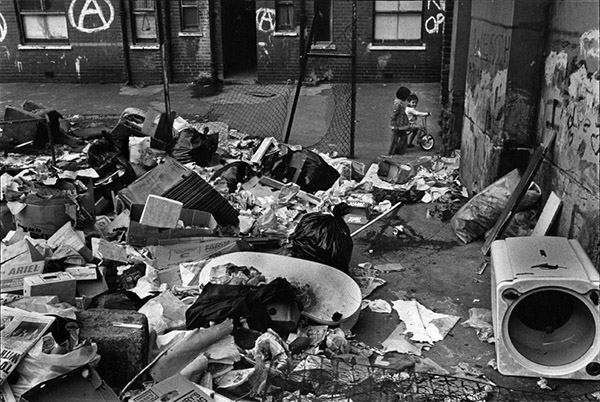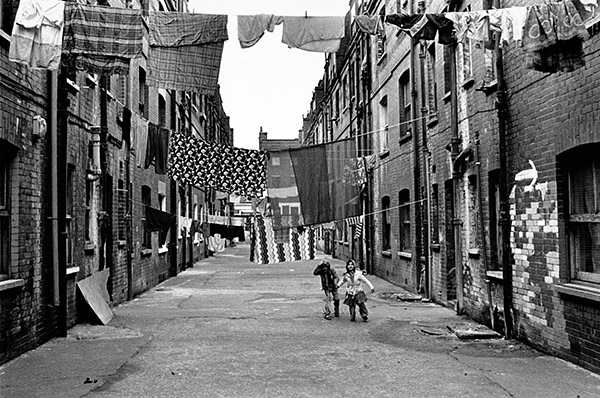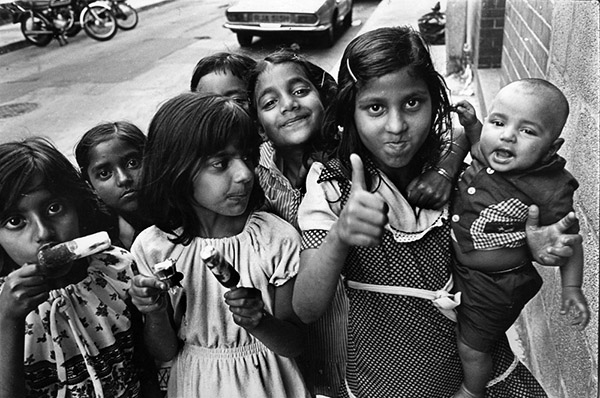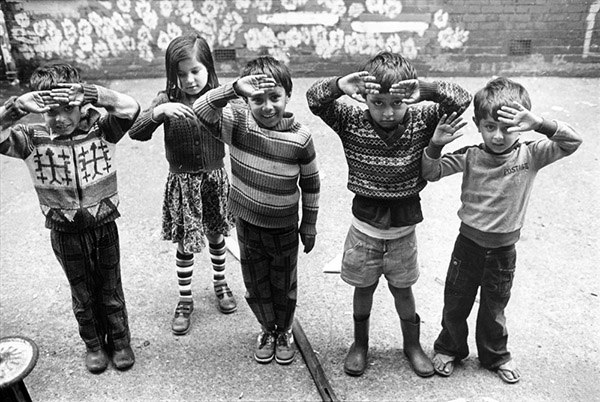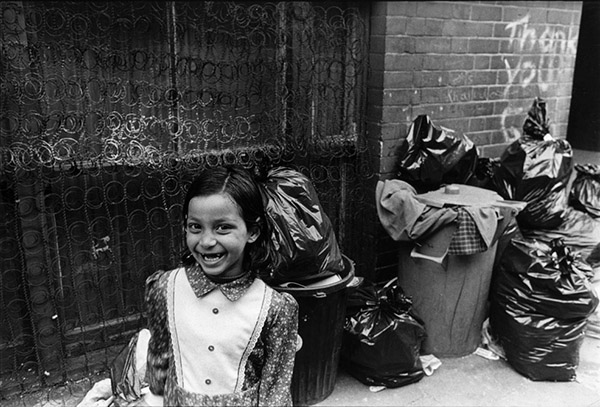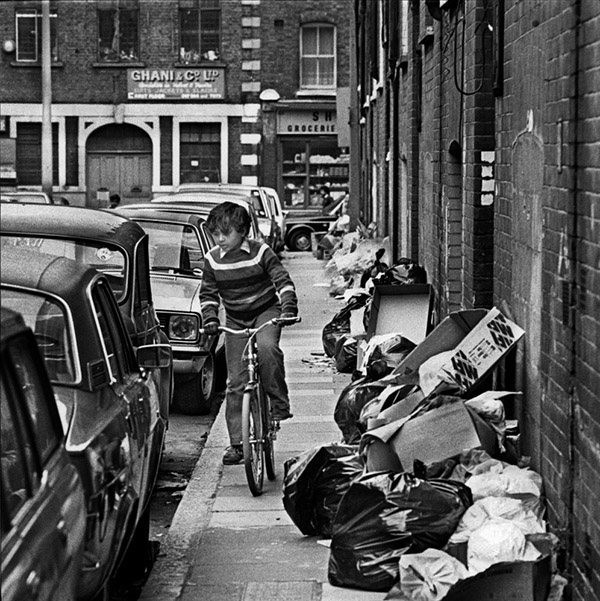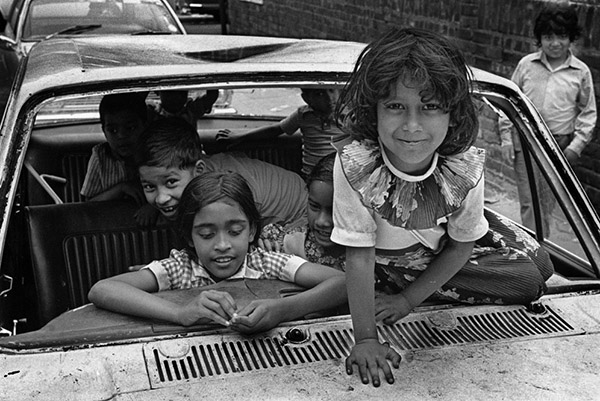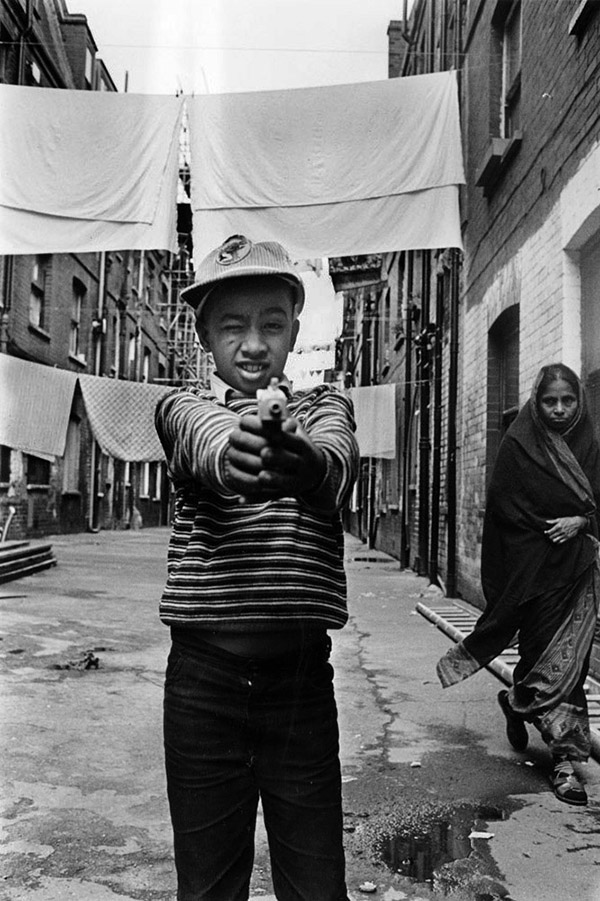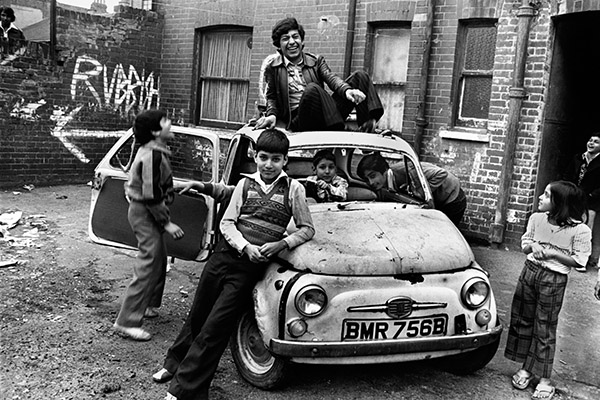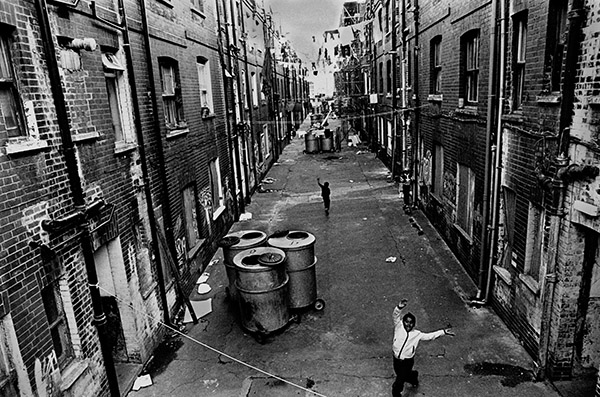In the midst of life I woke to find myself living in an old house beside Brick Lane in the East End of London
David Hoffman has a new exhibition of his photographs entitled A Sort of Home: 1970s Whitechapel at Gallery 46, 46 Ashfield St, Whitechapel, E1 2AJ, opening on 18th July and running until 15th August
Children playing at Fieldgate Mansions, April 1981
This series of photographs by David Hoffman, taken while he was squatting in Fieldgate Mansions off Fieldgate St in Whitechapel from 1973 until 1984, record a vital community of artists, homeless people and Bengali families who inhabited these streets at the time they were scheduled for demolition. Thanks to the tenacity and courage of these people, the dignified buildings survive today, restored and still in use for housing.
David Hoffman’s photographs record the drama of the life of his fellow squatters, subject to violent harassment and the constant threat of eviction, yet these images are counterpointed by his tender and intimate observation of children at play. After dropping out of university, David Hoffman found a haven in Fieldgate Mansion where he could develop his photography, which became his life’s work.
Characterised by an unflinching political insight, this photography is equally distinguished by a generous human sympathy and both these qualities are present in his Fieldgate Mansions pictures, manifesting the emergence of one photographer’s vision – as David Hoffman explained to me.
“It was the need for a place to live that brought me here. I’d come down from university without a degree in 1970. I’d dossed in Black Lion Yard and rented a squalid slum room in Chicksand St, before a permanent room came up for very little money in Black Lion Yard in 1971 above Solly Granatt’s jewellery shop. But the whole street was due for demolition, and when he died we squatted in it until they knocked it down in November 1973.
Then I found a place in Fieldgate Mansions which was being squatted by half a dozen people from the London College of Furniture. Bengali families were having a hard time and we were opening up flats in the Mansions for them to live there. We were really active, taking over other empty buildings that were being kept vacant in Myrdle St and Parfett St, because the owners found it was cheaper to keep them empty. We also squatted many empty houses further east in Stepney preventing the council from demolishing them. We took over and got evicted, and came back the next day and, when they put them up for auction, we used to bid and our bid won but, of course, we had no money so we couldn’t pay – it was a delaying tactic. It was a war of attrition to keep the buildings for people rather than for profit.
The bailiffs and police came at four in the morning and got everyone out and boarded up the property and put dogs in. Then we got dog handlers who removed the dogs and took them to Leman St Police Station as strays, and then we moved back in again.
When I moved into Fieldgate Manions it was late November and there was no hot water and the council had poured concrete down the toilet and ripped out the wiring. There was no insulation in the roof, it was just open to the slates and the temperature inside was as freezing as it was outside. I found a gas water heater in a skip and got it working on New Year’s Eve, so I counted in the New Year 1974 with hot water as the horns of the boats sounded on the river.
I decided to do Communication Design at the North East London Polytechnic, because I’d been taking photographs since I was a child and I’d helped set up a darkroom at university. At Fieldgate Mansions, I had a two room flat, one was my bedroom and office and other I made into a darkroom and I did quite a bit of photography. When I left college in 1976, I took up photography full time and began to make a slim living at it and I have done so ever since. While I was a student, I had a grant but I didn’t have to pay rent and it was the first time in my life I had enough money to feed and clothe myself. I stayed in Fieldgate Mansions until 1984 when I moved into a derelict house in Bow which I bought with some money I’d saved and what my mother left me, and where I still live today.”
Waiting to resist eviction in front of the barricaded front door of a squat in Myrdle St, Whitechapel, in February 1973. Ann Pettit and Anne Zell are standing, with Duncan, Tony Mahoney and Phineas sitting in front.
Doris Lerner, activist and squatter, climbs through a first floor window of a squat in Myrdle St
Max Levitas, Tower Hamlets Communist Councillor, tried unsuccessfully to convince the squatters that resistance to eviction should be taken over by the Communist Party
March on Tower Hamlets Council in protest against the eviction of squatters
Doris Lerner in an argument with a neighbour during the evictions from Myrdle St and Parfett St
Lavatory in squatted house in Myrdle St, Whitechapel, 1973
Police arrive to evict squatters in Myrdle St
Eviction in progress
Out on the street
Sleeping on the street after eviction
Liz and Sue in my flat in Fieldgate Mansions, September 1975
Coral Prior, silversmith, working in her studio at Fieldgate Mansions, 1977
Fieldgate Scratch Band
A boy dances in the courtyard of Fieldgate Mansions. Scheduled for demolition in 1972, it was squatted to prevent destruction until taken over by a community housing trust and modernised in the eighties.
by the gentle author
Photographs copyright © David Hoffman
You may also like to take a look at
David Hoffman at Crisis At Christmas
David Hoffman at Smithfield Market


